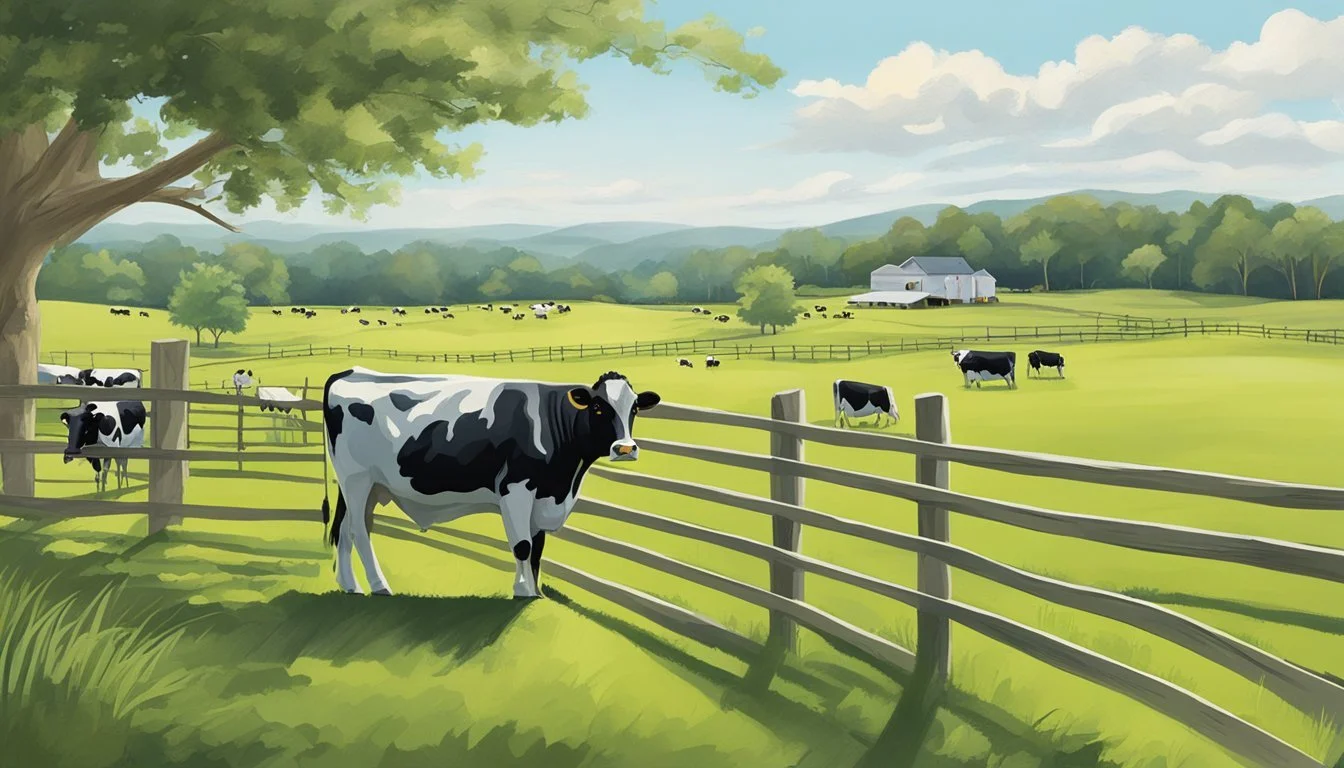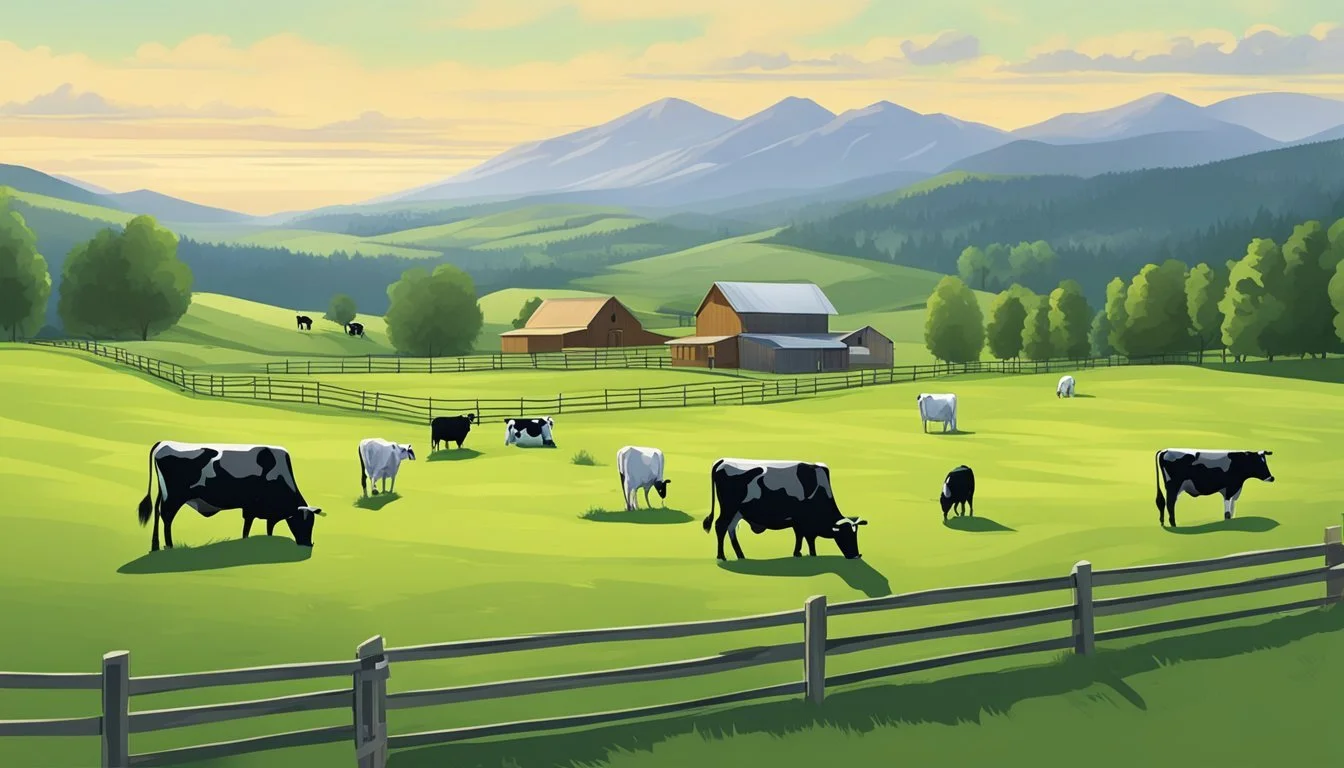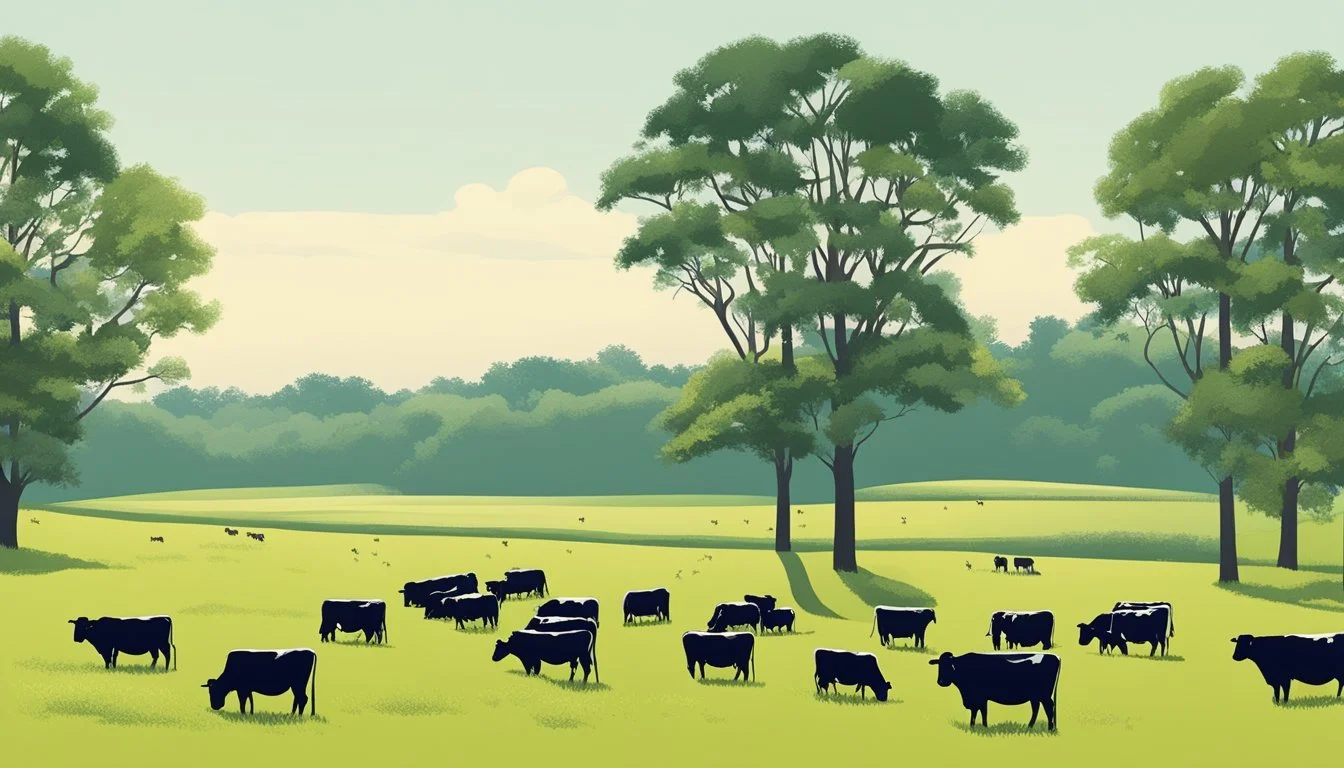Stocking Rate South Carolina
Determining Acre Capacity for Cows on Your Land
Stocking rate, a crucial element in managing grazing lands, is the number of livestock units per acre that a pasture can sustainably support over a given period. In South Carolina, due to the state's climate, soil types, and forage quality, the stocking rate can vary significantly. For landowners looking to maintain a healthy balance between their cattle and available pasture, understanding the state-specific factors that influence stocking rates is essential.
For South Carolina, stocking rate determination hinges on the interaction between the local environment and cattle needs. Specifically, landowners must consider forage production capacity, which fluctuates with weather patterns, soil fertility, and pasture management practices. Moreover, the type of cow is an influencing factor, as different breeds and sizes have varying forage demands. Finding the optimal cows per acre balance ensures that the land is not overburdened, thereby promoting the health of both livestock and pasture ecosystems.
The state's agricultural resources provide guidance on sustainable practices, suggesting that the stocking rates in South Carolina often average lower than in more arid regions due to better forage conditions. This means a well-managed pasture in South Carolina might support a higher number of cows per acre than harder-hit areas, provided the variable factors are favorable. It underscores the importance of an individual approach to each property, taking into account its unique characteristics and the overarching goal of harmonizing livestock health with land productivity.
Understanding Stocking Rates
In the context of livestock management in South Carolina, understanding stocking rates is crucial for sustainable pasture management. They determine how many cows a property can support without degrading the land.
Defining Stocking Rate and Carrying Capacity
Stocking rate refers to the number of livestock units that can be sustainably grazed on a given amount of land over a certain period, typically expressed as animal units per acre. The related term, carrying capacity, is the maximum number of animals the land can support throughout the year without causing environmental damage. These measures are influenced by the weight of the animals and the productivity of the land.
Stocking Rate Guidelines
The guidelines for stocking rates in South Carolina are determined by the forage availability and the demand created by the livestock. For instance:
Forage demand: Must encompass the daily intake needs of the animals, factoring in differences in body weight and production requirements.
Forage production: Should include not only the total produced but also the amount available for consumption after wastage.
A balance between forage demand and availability is essential to establish a stocking rate that maintains the health of the land and animals.
The Concept of Animal Unit
An Animal Unit (AU) represents a standard unit of measure for comparing different types of livestock based on their forage requirements. It is typically defined as a 1,000-pound beef cow with or without a calf. The concept facilitates the calculation of stocking rates by providing a common reference point, thus:
1 AU = 1,000 pounds of body weight.
Conversion of different livestock types to AU is based on their relative forage intake compared to the standard AU.
Understanding and applying AU calculations aids in determining appropriate stocking levels tailored to South Carolina's pasture conditions.
Determinants of Stocking Capacity
Determining how many cows a property in South Carolina can support involves assessing key factors such as forage production, pasture attributes, and climate conditions.
Forage Production Factors
Forage yield is crucial in determining stocking capacity. Different grass types, for instance, may offer varying amounts of biomass which directly impacts the amount of forage available for livestock. The average annual precipitation of an area influences forage growth rates and yields. In South Carolina, where annual precipitation can vary significantly, it is important to consider precipitation patterns when estimating forage production.
Grass Type: The type of grass in your pasture can make a considerable difference. For example, Bermuda grass may produce more usable forage compared to fescue under the same conditions.
Annual Precipitation: South Carolina typically experiences an average annual precipitation ranging from 40 to 80 inches, with variations influencing forage yield.
Pasture Size and Quality
The size of the pasture, along with its quality, can influence the stocking rate. Better quality pastures with optimal forage types will have higher stocking rates.
Pasture Size: A larger acreage allows for more cows, but only if the forage production is sufficient.
Pasture Quality: Pasture with high-quality forage, adequate nutrient content, and proper management can support a higher number of cows per acre.
Climate and Weather Conditions
Climate and seasonal weather conditions significantly affect forage availability. In South Carolina, the relatively warm and humid climate can support year-round forage production, but this depends on the management of weather-related stress on the pastures.
Climate: The warm climate can extend the growing season, affecting the amount of forage produced.
Weather Conditions: Extreme weather conditions, such as prolonged drought or excessive rainfall, can impact pasture production and health, subsequently affecting stocking capacity.
Grazing Management Techniques
Effective grazing management techniques are fundamental for optimizing livestock production while maintaining the health of pasture ecosystems. These practices can significantly affect the stocking rate in South Carolina by influencing forage availability and quality.
Rotational vs. Continuous Grazing
Rotational grazing involves moving livestock between pasture areas to allow for regrowth of foraged plants. This method usually results in more uniform grazing, helps to improve forage utilization, and can increase the overall stocking rate. In contrast, continuous grazing allows animals to graze in a single pasture for an extended period, often leading to overgrazing and less efficient use of available forage.
Rotational Grazing:
Pros: Improved plant recovery, better nutrient distribution, increased stocking rates.
Cons: Requires more management and infrastructure.
Continuous Grazing:
Pros: Lower immediate costs, less complex management.
Cons: Can lead to soil compaction, overgrazing, and reduced forage production over time.
Improving Forage Utilization
To maximize forage utilization, managers must balance livestock numbers with available forage. This includes adjusting the utilization rate—the percentage of forage cropped by animals. A utilization rate of 25%-30% is often recommended to allow for regrowth and sustainability. However, rates may vary based on forage species and environmental conditions.
Key factors influencing forage utilization:
Pasture size and layout
Forage type and growth rate
Livestock feeding behavior
Managing for Sustainability
Sustainable grazing practices are crucial to ensure the long-term productivity of the pastures. These include:
Monitoring forage production: Keeping track of forage yield to adjust stocking rates accordingly.
Soil health management: Employing techniques like cover cropping and proper fertilization to enhance soil fertility.
Diversified forage species: Planting a mix of forage crops to increase resilience to pests, diseases, and changing weather patterns.
By implementing these techniques, property owners can support a productive and sustainable stocking rate that aligns with South Carolina's climatic and geographic conditions.
Calculating Proper Stocking Rates
To sustainably manage livestock, determining the correct number of cattle that an acre of land can support is crucial. This involves using cattle per acre calculators, applying Animal Unit Months (AUM), and adjusting rates to consider the specific local conditions in South Carolina.
Using Cattle per Acre Calculators
Cattle per acre calculators provide a preliminary estimate for the number of cattle a property can support. They operate by factoring in the average forage production in a region and the nutritional needs of the cattle. It is essential to input accurate data regarding forage availability and cattle requirements to get a reliable estimate of the stocking rate.
Application of Animal Unit Months (AUM)
An AUM is the amount of forage needed to sustain one "Animal Unit" (approximately a 1,000-pound cow) for one month. Stocking rates are frequently measured in AUMs to standardize the comparison across different animal types and sizes. For instance, a 1,400-pound cow is equivalent to 1.4 animal units. By knowing the AUM requirement of the land, one can calculate the acceptable number of animal units the property can support over a given period.
Adjusting Rates for Local Conditions
Local conditions in South Carolina, such as climate, soil type, and forage quality, heavily impact the actual carrying capacity of the land. These local factors can cause significant variations in the number of cattle per acre the land can sustain. Therefore, after obtaining estimations from calculators and AUM guidelines, it's imperative to adjust the figures to reflect the local conditions accurately. Regular assessments and adjustments ensure that the stocking rates remain sustainable and the land is not overburdened.
Stocking Rate Variations
Stocking rates on a property are not one-size-fits-all and vary based on several factors including the livestock type and breed, the specifics of the region and farm size, as well as the impact of seasonal changes, all of which are integral to understanding and determining the appropriate number of cows per acre.
Influence of Livestock Type and Breed
Different types of livestock and breeds within a species have varying forage requirements. For instance, a mature Angus cow may require more pasture than a smaller breed like the Dexter due to differences in weight and forage intake. Additionally, breeds that are adapted to certain climates may forage more efficiently than others not suited to the same conditions.
Differences by Region and Farm Size
In South Carolina, the coastal plains may support different stocking rates compared to the upstate regions due to variations in soil fertility and forage growth. Smaller farms often implement more intensive management practices allowing them to support a higher stocking rate than larger, extensive ranch operations.
Impact of Seasonal Changes
The grazing season in South Carolina typically ranges from April to October. However, stocking rates may need adjustment seasonally to align with changes in forage availability. Drought conditions during the summer months can reduce forage productivity, necessitating a lower stocking rate, while optimal rain conditions in other seasons could support a higher rate.
Mitigating Overgrazing Risks
Proper management practices are essential to prevent overgrazing, sustain soil health, and ensure that pastures remain productive. Identifying early signs of overuse and implementing systematic strategies can mitigate risks associated with degraded pastures.
Indicators of Overgrazing
Overgrazing occurs when plants do not have sufficient recovery time between grazing episodes, leading to a decline in pasture quality. Key indicators of overgrazing include:
Bare Soil Patches: Increased visibility of bare ground, indicating that plants have been grazed too short.
Weed Infestation: Opportunistic weeds filling spaces where overgrazed forage cannot compete.
Compacted Soil: Hardened soil surface, reducing water infiltration and root growth.
Forage Shortage: A notable decrease in available forage compared to previous seasons.
Strategies to Prevent Overuse
To prevent overuse and maintain pasture productivity, several strategies can be applied:
Rotational Grazing: Implement a grazing system, dividing the pasture into smaller areas and rotating the herd to allow for regrowth.
Stocking Density: Adjust the number of cows per acre based on forage availability, ensuring the herd's demand does not exceed growth.
Monitor Forage Growth: Regularly check forage height and density to keep grazing intensity in check and prevent overuse.
Recovery Plans for Degraded Pastures
For pastures already impacted by overgrazing, recovery plans are necessary:
Rest Periods: Provide extended rest for degraded pastures to recover, preventing the herd from grazing until forage has adequately regrown.
Soil Testing: Conduct soil tests to determine nutrient deficiencies and plan for appropriate fertilization to aid plant recovery.
Reseeding: If needed, overseed pastures with a mix of grasses to reestablish cover and outcompete weeds.
Implementing these measures can help land stewards maintain the health and productivity of their pastures, ensuring a sustainable environment for their herds.
Multipurpose Grazing Systems
Multipurpose grazing systems, particularly in South Carolina, can enhance pasture utilization and health. These systems often incorporate rotational grazing practices, allowing for a rest period for pastures which can improve forage growth and reduce overgrazing.
Benefits of Multi-Species Grazing
In multi-species grazing, different types of livestock such as cattle, sheep, and goats are raised together on the same pasture land. The benefits of such systems are manifold. Firstly, cattle tend to graze on grasses, while sheep and goats prefer forbs and browse, reducing competition for feed. This results in a more efficient use of the available forage.
Weed and Pest Control: Sheep and goats naturally graze on many plants considered weeds, providing a biological control method.
Soil Health: The varied grazing patterns and hoof action of different species can help in maintaining soil health and reducing erosion.
Integration of Cattle with Other Livestock
Integrating cattle with other livestock like sheep and goats can make excellent use of the land and available resources due to the complementary grazing habits and pasture management needs of the different animal species.
Dairy and Meat Production: It can increase overall farm productivity since it allows for both dairy and meat production from the different livestock types.
Rotational Grazing System: Implementing a rotational grazing system aids in pasture recovery and reduces parasitic load, benefiting all species involved.
Management Practices: Careful management is necessary to balance the nutritional needs and health of the diverse animals in this grazing system.
Farmers may adjust stewardship approaches based on the specific context and goals, which may include improving soil health, livestock health, and economic returns.
FAQs on Stocking Rate in South Carolina
How many cows per acre can my property support in South Carolina?
The number of cows per acre that a property can support in South Carolina depends on the quality of the pasture and land management practices. Generally, a rule of thumb is one to two acres per cow with calf. However, efficient land management can potentially support more.
What factors affect stocking rate in South Carolina?
Pasture quality: Higher quality forages can support more cows.
Season: Stocking rates may vary with the seasons due to changes in forage availability.
Land management: Practices like rotational grazing can affect how many cows the land can support.
Does the size of the cow affect the stocking rate?
Yes, the size of the cow and the growth stage of its calf impact the stocking rate, as different sizes have different nutritional needs.
Is there a standard animal unit (AU) in South Carolina?
Typically, an AU is based on a 1,000-pound cow with a calf. Adjustments are made based on this standard.
Factor Consideration for Stocking Rate Forage Quality High-quality forage can sustain higher stocking rates. Cow Size Larger cows require more forage, affecting the stocking rate. Season Stocking rates can fluctuate with seasonal changes in forage growth. Land Management Practices like rotational grazing can improve stocking rates.
Is stocking rate the same as carrying capacity?
No, stocking rate refers to the number of animals on the land at one time, whereas carrying capacity is the maximum number of animals the land can support over a period without causing degradation.
Economic and Business Considerations
When considering stocking rates in South Carolina, cattle producers must weigh the imperatives of profitability against maintaining pasture health, all while navigating market trends and fine-tuning sales strategies.
Balancing Profitability and Pasture Health
Cattle producers strive to maximize efficiency and productivity to ensure economic viability. They must determine the optimal number of cows per acre their property can support without degrading pasture health. Overstocking can lead to overgrazing, soil compaction, and reduced forage availability, which in turn can diminish animal growth rates and overall health, potentially reducing profitability. Conversely, understocking can lead to under-utilized resources. It is a delicate balance where the goal is to optimize forage utilization while sustaining pasture longevity.
Market Trends and Sales Strategies
Understanding and adapting to market trends are vital for cattle sales success. Producers should monitor beef market prices and demand fluctuations to determine the best times to sell, which impacts stocking rate decisions and sales strategies. Forward-thinking producers often employ advanced sales strategies, such as futures contracts or niche marketing for organic or grass-fed beef, to secure better prices and consumer loyalty. They analyze cost inputs, such as feed and veterinary care, against expected sales to determine the most efficient and profitable stocking rates for their operations.
Additional Resources and Expert Advice
For cattle producers in South Carolina seeking a deeper understanding of stocking rates and pasture management, consulting experts and leveraging various resources is crucial. It's important to consider cattle type and pasture inventory when determining How many cows per acre a property can support.
University Extensions: These institutions offer extensive research-based knowledge, workshops, and personalized advice. South Carolina's Clemson University Cooperative Extension Service provides resources on livestock and forage management.
Cattle Associations: Organizations such as the South Carolina Cattlemen's Association serve as a gathering point for collective wisdom and provide insights into best grazing practices tailored to regional conditions.
Agricultural Consultants: Industry professionals offer services including pasture inventory analyses and advice on how to optimize grazing practices specific to cattle type and land conditions in South Carolina.
Online Tools: Various calculators and software aid in estimating appropriate stocking rates. However, these should be used as a guideline rather than a definitive solution due to the variability of factors involved.
Cattle Producers' Workshops: Attending local workshops and seminars can provide valuable practical advice and networking opportunities with other farmers.
Farmers should explore the following resources:
Resource Type Description University Extensions Workshops, personalized advice, research data Cattlemen's Association Networking, industry news, local best practices Agricultural Consultants Pasture inventory management, specific cattle advice Online Tools Stocking rate calculators, software for pasture management
Additionally, grazing management books and peer-reviewed journals are a font of data and case studies on cattle-to-acre ratios for different types of pastures and cattle breeds.






